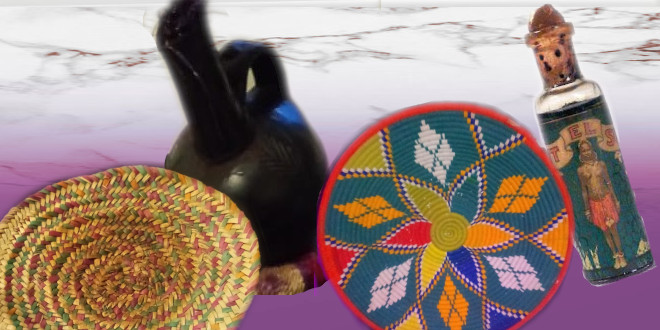Theorizing Hamid Idris Awate In A Postmodern World

Introduction
We live in the era of visual imagery. We are constantly gravitated toward emotions for things that are simulated through images, i.e. not real. In this time of visual inundation, what is real hides the fact that there is none. The reality that equates Hamid Idris Awate with the biblical saint is a forced truth mediated by this imagery and our inner need for comfort. What we perceive as real pertinent to Awate is thus wasn’t and never been-except for its only purpose of concealing this fact from us. Awate was a human in a non-real time. He lived and died decades ago. The real time emotion that he commands is therefore attributed to his simulated image. This image of Awate dictates our imaginations to the point of accepting the unreal fact of living with him here and now. Through this image, we are made to think that we share the same temporal and spatial dimension. We build on this premise to know him the way we know him, and consequently authorize ourselves to appropriate disgust, anger or open resistance toward deviations from what we know. But what we know is his simulation blurred as reality, which blinds us from realizing that he isn’t real in time and real in space. Then, how do we reach to this juncture of looking at Awate’s image and juxtapose an imagery of omnipresent existence though it defies the rules of time and space? Are we prone to such delusion? How come the imagery grows to be more real than the real that it represents, if any? How did we bring ourselves to the defense of the imagery when doubt is casted at it?
Jean Baudrillard, one of the influential postmodern theorists, has an answer to this a rather bleak picture of our current postmodern condition. He starts from our innate and insatiable need to comprehend our sense experience—or a total understanding of the world—that remains consistently elusive. He says that this fruitless search for total knowledge lead, almost inevitably, to delusion. The subject matter that we always try to grasp can only be understood according to what it signifies. And because the process of signification “immediately involves a web of other signs from which it is distinguished, this process and web never produces the desired results. The subject, rather, becomes seduced by the object. He therefore argued that, in the last analysis, a complete understanding of the minutiae of human life is impossible, and when people are seduced into thinking otherwise they become drawn toward a “simulated” version of reality, or, to use one of his neologisms, a state of “hyperreality””. So, one may ask, how does this hyperreality get manifested on Awate?
Let’s start with the simple accepted facts that we know as ‘real Awate’. For convenience, I paraphrase, probably, tones of texts in a single sentence: “Awate is a national hero, a simple gallant nomad who stood against the enemy to free his people.” The fact that he is dubbed as the national hero makes him the symbol, or national father figure, if you will, that placates us in our fatherless (or father-irrelevant) age. His simple statue appeals to the broader social standing of ours. Gallantry is signified by his stern face, cavalry, bandolier, sword and rifle. The moment we gaze at this image, we immediately transgress all natural reasoning and/or intuition to see ourselves standing and triumphing against all follies. He stands as our microcosm, as our universal model or symbol that signifies us. But, it is there that we lose the track of him being as a model that we chose to accept to represent us. This image is thus no longer of that of Hamid Idris Awate, a referential being or a substance, if you will. It is a chain of self referential metaphors hardened into truth, without origin and without the real. The metaphors that we use to refer to symbolism, to fatherhood, to equality and heroism precede and become what wasn’t there. The object (means the image) now seduces the subject (means Awate). A number of factors have contributed to and explain our detachment from reality.
What are these Factors?
1. Shallow History: we, as Eritreans, are people of shallow history of defiance. Our gallantry lacks the temporal depth of maturity. Everything that we say to acquire or imply an extended history of defiance is thus a myth. So, what we have lacked in depth is now sought in expanse. Consequently, we go through painful exercises of explanations and depictions to show what small we have is in fact big. In the process, we misrepresent the real. But that is not all. What we use to represent becomes the reference to other representation, and other, and other. So what we have now is eventually cause to be the real without the origin. As we look for available near historical references to locate them in the distant past via stretching or over detailing, we lose touch with their sense of reality. Even dead humans –hero or not- are now understood as symbols, which is to say that they are defined in similarity to our aspirations. The imagery of Awate; in certain specific ways, with certain selected metaphors; is therefore meant to satisfy this quest for mature defiance. What we are aspiring for future takes a U-turn back to a historical beginning to show continuity, and by extension, assure ourselves of our desired destiny.
2. Mediatization: as humans, we are more receptive to crystallized images. That partly explains our bias to perceived purity (at an abstract level) and the proliferation of 3D cinemas, double digit mega pixel cameras, HD TV screens (at a concrete level) which depict reality more enhanced than what it actually is. The terser an image (with no horizontal stripes, dark spots and glares) is the more desirable, is thus more believable. That is the way Awate’s imagery is mediated. The concept behind the image is concise (expressed without conjunctions like but, however, although-perhaps human?), yet coherent; and the image itself is very accessible. It is simplified to project this concise simple concept, which in the process eliminates (or hides) the innate complexity of humans. We are detached from this reality though, because we are deluded away from the fact that there is nothing called a human being (dead or alive) who represents nothing but a single concept. This image is a simulation without the origin.
3. Consumerism: we live in the era of consumption; not merely to satisfy need, but also to symbolize an object and be signified in a certain way. One may wonder cf. that we haven’t yet started to sale Awate buttons, t-shirts or bring his image in billboards, TV ads etc… However, in this seemingly absent traded commodity, we still are consuming an idea-an idea that Awate is traded with, most importantly the one that signifies our heroism. We consume this idea so much so that our ways of thinking is filtered through the logics of this consumption value. Any alternative idea then provokes buyer’s remorse, ergo we respond to it violently (the initiated may call it heroically). But what is obscured from us is that we weren’t treating ourselves as humans when we defend Awate’s image, but as consumers. And inherent in consumption is compliance; not defiance. What we thought would represent us as rebellious inevitably produces us as slaves.
4. Language and Ideology in Time Frames: ideology gives foundation to our very perception of reality. There is nothing outside ideology that can be articulated in language. Since we are too dependent on language to structure our perceptions, any representation of reality is already ideological; means a subset of a hegemonic metanarrative. Metanarrative is a narrative about narrative. It is a second order schema in meaning making of experience, knowledge, historical account, or a fleeting event. It is a broader schema, from which society derives legitimacy to its knowing. It is self-fulfilling, and violent to other modes of knowing for it renders them irrelevant. Thus any modes of communication- speaking, writing, image or imagery- can only be articulated and understood within this ideology, which, again, is a representation of what is already represented. The comprehension of imagery of Hamid Idris Awate is therefore, falls into this meaning making process. Furthermore, we couldn’t comprehend his representation without first been dominated by an ideology of steadfastness, self-reliance, heroism, patriotism, freedom; all of which, arguably, are constituted in the metanarrative of nationalism. Yet, they too constitute goals, expectations and actions. When we look forward to goals, expectations and actions-we are looking toward the future. When we use past or present imagery to convey our desires for the future, we already lost reality for we are conflating time references (or frames). Past and future are confused to mean something-thus nothing. That is what the imagery of Awate eventually means-a confused time reference to mean nothing.
Conclusion
Here- I am not talking about Awate as a person, as a freedom fighter or as a father. What I am talking about is his imagery-the construed image –while positioned as a representation of the reference-yet ended up to be it. So, is there a way out from our bleak postmodern squabble over this confusion, means over nothing? The answer is yes, though very, very hard. When symbols come into prominence, they go through a process that put egos, integrities and feelings on the line. There are real humans behind this symbolization. And these people won’t let it go easy. They are brothers and sisters who went the extra mile to internalize these symbols; and more than often, with good intentions. Some even find a way to express identity through them. Any attack on these symbols may thus risks an attack on their identity, their good intention, their ego and integrity. It may alienate them, and can even be a cause for cleavage. But tolerance will solve it all (tolerance of prominent symbols, and tolerance towards alternative others). And the beauty is that, both can be entertained. If we say that Awate had died for freedom, why can’t we honor that by giving others the freedom to deny it? Aren’t we affirming our acceptance of him as a symbol of freedom through our tolerance? And attackers-remember this. For every attack we throw, a brother may have been severing his ties with us. We will eventually grow thin and weak, and no other symbol will return us strong. So, let us be happy and celebrate the idea, which is symbolized by Awate.
Merry Christmas and Millions of love




Awate Forum